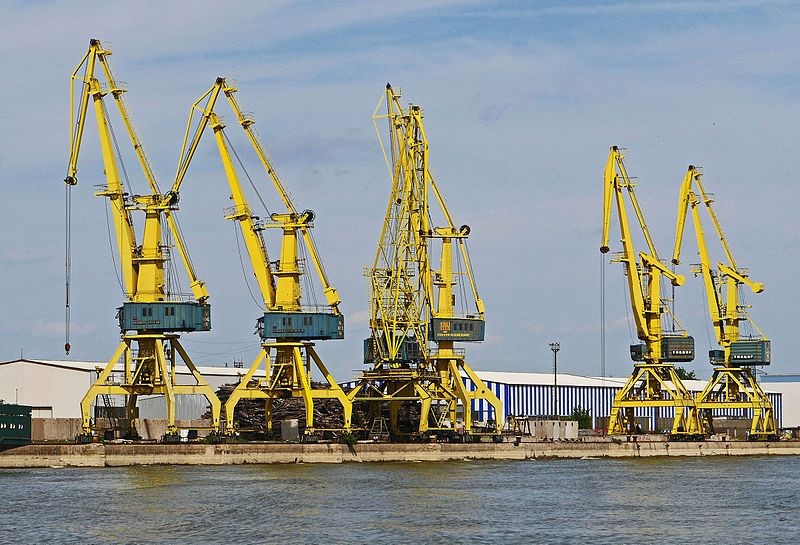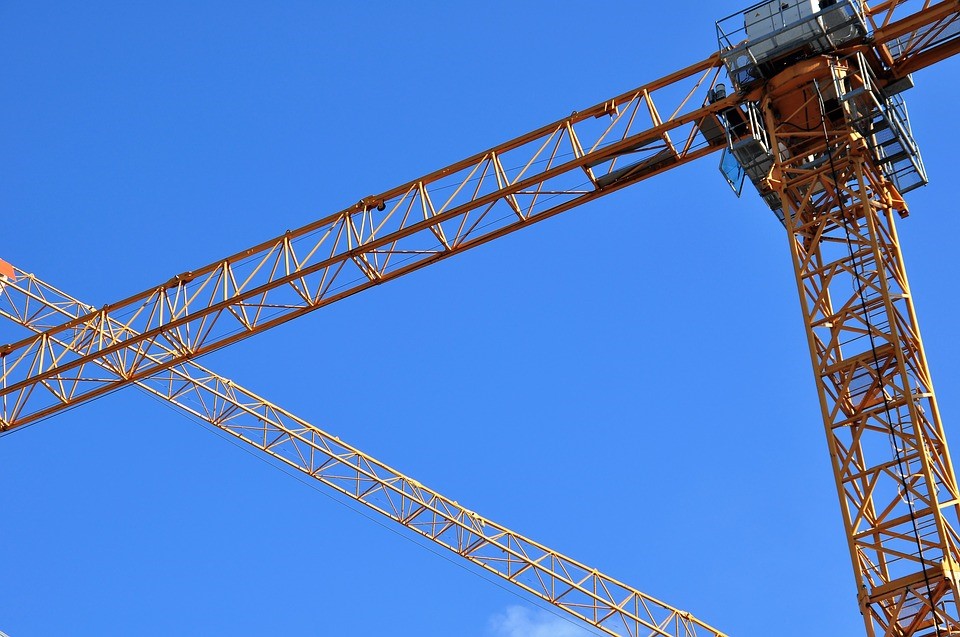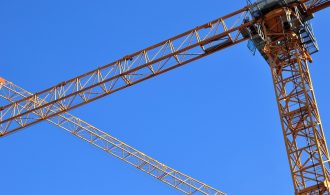Cranes have been enabling our construction projects since at least 900 BC. The ancient Greeks used them to create their marble theatres, temples and monuments. One of the earliest items known to have been lifted by crane is a stone sarcophagus in Corinth weighing 2.3 tons.

Curiously, there is no evidence of cranes being used to construct the pyramids. Some blocks weigh 50 tons, and even modern cranes could not lift them.
How were they powered without motors?
They relied on differentials, rope and manpower, often assisted by donkeys or oxen. The Romans used slaves to walk round inside a treadmill. The block and tackle helped tremendously, and although its invention is often credited to Archimedes (circa 250 BC), the Babylonians were using them in 1500 BC. It’s believed they were probably used to build Stonehenge in 2500 BC.
When did cranes become more modern?
Cranes remained a manual tool until the steam engine came along. Improvements made over the years include the addition of an articulated “finger” in the crane’s neck called a “jib”. This gives cranes a much improved field of movement. Stronger, lighter materials have also allowed cranes to grow taller, and clever design techniques allow cranes to build themselves section by section. That’s why they seem to appear from nowhere!

Types of cranes
Cranes fitted with different technology include the telescopic crane and the giant cantilever (or “hammerhead”). The boom of a telescopic crane consists of concentric tubes that extend hydraulically, while the cantilever has a fixed jib and moves along racks.
The davit crane (see https://www.gmh.co.uk/transition-piece-davit-cranes/) began as “goose neck” devices that lower lifeboats safely from ships, so they are regulated in Article 28(a) of the Convention on the International Maritime Organisation. Excellent braking improves their control, and advances in carbon fibre composites allow a davit crane to be large enough to erect wind farm turbines or light enough to be dismantled and stowed when they are not in use.
There are also cranes mounted on trucks, trailers, helicopters and ships, while others are static installations in docks and factories. For rough terrain, there are cranes that move on caterpillar tracks or giant tyres. The design of the crane and its platform are never separate; the platform is important to stabilise the crane while increasing its range of motion.

